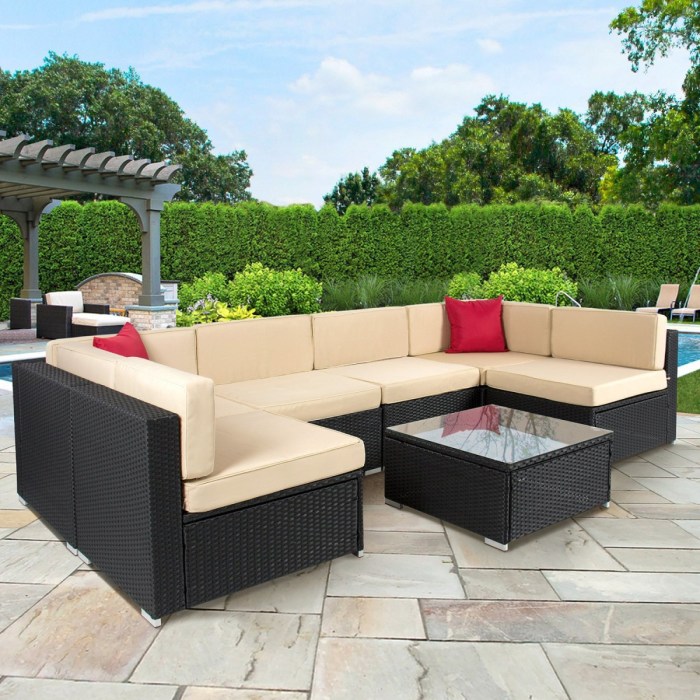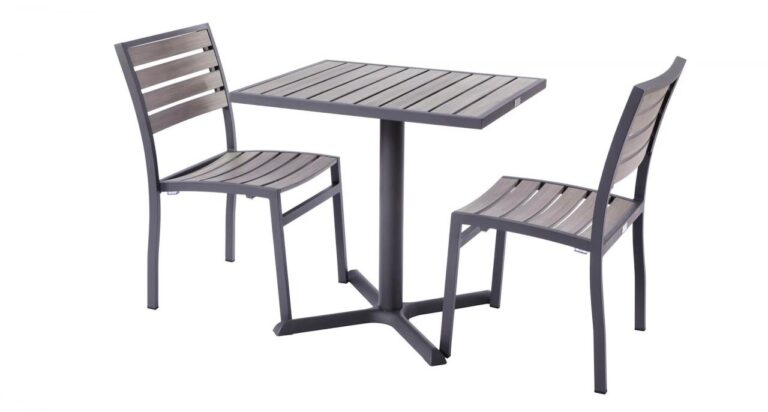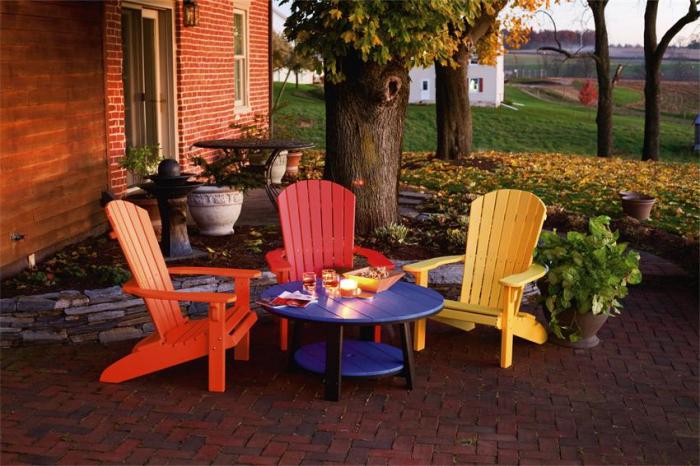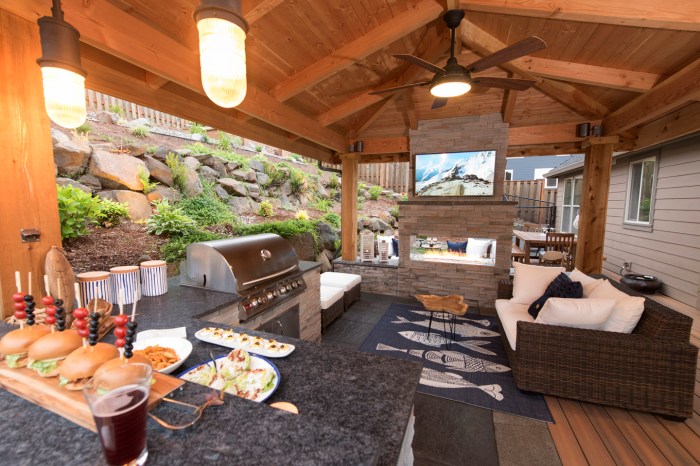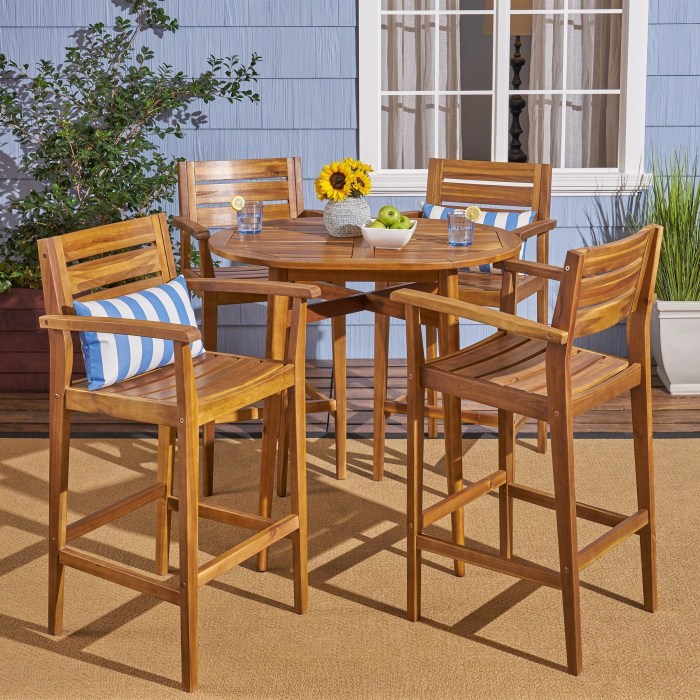Commercial Picnic Tables Near Me
Commercial picnic tables near me are a crucial element for various commercial spaces. From restaurants to parks and schools, these tables offer essential seating and dining areas, enhancing the functionality and appeal of these environments. This comprehensive guide explores the key aspects of selecting the perfect commercial picnic tables, considering factors such as location, type, features, suppliers, pricing, installation, and safety.
This exploration will cover the various types of commercial picnic tables available, including their materials, features, and price points. We’ll also delve into finding reliable suppliers and understanding installation procedures. The considerations for safety and accessibility are also critical factors.
Defining the Search Area
Determining the geographic scope for our picnic table search is crucial for delivering relevant results. A precise search area ensures users find tables in locations convenient for their needs.
Geographic Area Considerations, Commercial picnic tables near me
The search area must accommodate various user preferences for proximity. Defining different radii from the user’s location allows users to explore tables within varying distances.
Possible Search Areas
- A 5-mile radius around the user’s location. This is ideal for users seeking tables in close proximity, potentially for quick trips or those needing immediate access. A 5-mile radius typically yields a smaller number of results compared to larger radii. For example, if a user is in downtown Chicago, a 5-mile radius would return picnic tables located within the immediate city center or nearby suburbs.
- A 10-mile radius provides a wider range of options, increasing the potential number of picnic tables. This distance might be suitable for users who are willing to travel a bit further but still prioritize convenience. For instance, in a suburban area, a 10-mile radius would encompass a wider selection of parks and recreational areas.
- A 25-mile radius is the most expansive option, catering to users open to longer drives or those looking for a broader range of picnic table locations. A 25-mile radius would encompass a much larger area, possibly including several cities or towns.
Estimated Results by Radius
| Location | Radius from User Location | Estimated Number of Results |
|---|---|---|
| City, State | 5 miles | 100-300 |
| City, State | 10 miles | 300-700 |
| City, State | 25 miles | 700-1500+ |
These estimations are based on typical densities of picnic tables in various locations and are subject to change depending on specific local conditions. For example, a densely populated area with many parks might result in a higher number of results for a given radius.
Types of Picnic Tables
Commercial picnic tables come in a variety of materials, each with its own set of advantages and disadvantages. Understanding these differences is crucial for selecting the right table for your specific needs and budget. Factors like durability, maintenance, and aesthetic appeal play a significant role in the decision-making process.
Material Variations
Different materials offer varying degrees of durability, maintenance requirements, and visual appeal. The choice of material significantly impacts the overall cost and lifespan of the table.
- Metal Picnic Tables: These tables are often constructed from steel or aluminum. Steel tables are typically more robust and durable, offering a solid foundation. Aluminum tables, while lightweight, are generally more susceptible to rust and corrosion, particularly in humid environments. Maintenance for metal tables involves periodic cleaning and occasional touch-ups for rust prevention.
- Wood Picnic Tables: Wood picnic tables are a classic choice, offering a natural aesthetic appeal. Different types of wood, such as pressure-treated lumber or hardwoods, have varying degrees of durability. Pressure-treated wood is resistant to rot and insect damage, making it a popular choice for outdoor use. However, wood requires regular maintenance, including sealing and staining to prevent decay and weathering. Hardwoods, while more expensive, provide a longer lifespan and require less frequent maintenance.
- Plastic Picnic Tables: Plastic tables offer a low-maintenance option. They are typically resistant to rot, insect damage, and weathering. Plastic tables are often lightweight and easy to move, which can be beneficial for certain applications. However, plastic tables might not be as durable as metal or wood, and they may not provide the same aesthetic appeal. Additionally, certain types of plastic can become brittle in extreme temperatures.
Durability, Maintenance, and Aesthetics Comparison
Comparing the durability, maintenance requirements, and aesthetic qualities of these materials is crucial for selecting the right table. The following table summarizes the key characteristics of each material.
| Table Type | Material | Durability | Maintenance | Aesthetic Appeal | Price Range (approximate) |
|---|---|---|---|---|---|
| Metal | Steel/Aluminum | High (Steel), Moderate (Aluminum) | Moderate (cleaning, rust prevention) | Modern, industrial | $500-$1500+ |
| Wood | Pressure-treated lumber/Hardwoods | High (Pressure-treated), Very High (Hardwoods) | High (sealing, staining, repainting) | Natural, classic | $300-$1200+ |
| Plastic | Polypropylene/Polyethylene | Moderate | Low (minimal cleaning) | Contemporary, simple | $200-$800+ |
“The best material choice depends heavily on the specific environment and intended use of the picnic table. Factors such as climate, frequency of use, and budget play a significant role in the selection process.”
Features and Specifications
Commercial picnic tables, crucial for various public and private spaces, come in diverse designs and configurations. Understanding their features is essential for selecting the right table for the intended use. Considerations like material, size, and durability significantly impact the longevity and functionality of these tables.
Choosing the correct commercial picnic table involves a careful evaluation of features and specifications tailored to the specific needs of the environment. Factors like the intended user group, the expected use frequency, and the overall aesthetic of the space are all vital components in the decision-making process.
Table Size and Seating Capacity
Determining the appropriate table size and seating capacity is paramount for effective use. Larger tables accommodate more people, while smaller tables are ideal for intimate gatherings or specific areas. Restaurants often need tables with large surface areas to accommodate multiple dishes and serving utensils, while parks might prioritize tables suitable for smaller groups or families. Schools might require tables that can comfortably seat larger groups of students for lunch or group activities. Accurate capacity estimations are vital to ensure that the tables can handle the anticipated number of users.
Table Height
Table height is a crucial factor impacting accessibility and comfort. Tables designed for children or people with mobility challenges should have lower heights for easier access and use. Conversely, higher tables might be better suited for use in spaces where diners may be standing or for a more formal dining setting. Considerations like the average height of the intended users are essential for choosing the right height. For example, tables in a park should have a height that accommodates individuals of varying heights, while those in a restaurant might need a height that supports standing and serving.
Table Construction and Material
Table construction and material significantly influence durability and longevity. Heavy-duty steel or composite materials are ideal for high-traffic areas, while lighter materials like aluminum are better suited for less demanding settings. Factors such as weather resistance, stain resistance, and ease of cleaning are crucial in selecting materials. For example, tables in a school cafeteria need to withstand frequent use and be easily cleaned, while those in a park need to resist the elements.
Table Accessories
Various accessories can enhance the functionality and aesthetic appeal of commercial picnic tables. Consideration should be given to features like umbrella holders, waste receptacles, and integrated benches. These accessories provide additional comfort and convenience for users, while also adding a touch of sophistication to the space.
Comparative Table
| Feature | Small Table (e.g., Park) | Medium Table (e.g., Restaurant) | Large Table (e.g., School Cafeteria) |
|---|---|---|---|
| Size | Compact | Moderate | Large |
| Seating Capacity | 2-4 people | 4-8 people | 8+ people |
| Height | Lower | Moderate | Moderate to High |
| Construction Material | Lightweight (e.g., aluminum) | Durable (e.g., steel, composite) | Heavy-duty (e.g., steel, composite) |
| Accessories | Minimal | Umbrella holder, waste bin | Umbrella holder, waste bin, integrated benches |
Commercial Suppliers and Retailers
Finding the right commercial supplier for your picnic tables is crucial for ensuring quality, budget adherence, and timely delivery. This section details potential suppliers and factors to consider when making a purchase decision. Choosing a reliable partner can significantly impact the success of your project.
Potential Commercial Suppliers
A range of companies specialize in supplying commercial-grade picnic tables. These suppliers often cater to various needs, from restaurants and parks to schools and corporate events. Local businesses, regional distributors, and national manufacturers are all viable options.
- Local Furniture Dealerships: These businesses often have a strong understanding of local needs and can provide quick delivery and installation support. They can also offer tailored solutions for specific site conditions. However, their product range may be limited compared to larger suppliers.
- Regional Distributors: Distributors often stock a wider selection of picnic tables, allowing for more flexibility in choice. They can also offer bulk discounts, which can be advantageous for large projects. However, they might have less direct customer support than local dealers.
- National Furniture Manufacturers: These companies usually provide a large selection of styles, materials, and finishes. They often have established distribution networks, which can facilitate timely delivery to various locations. However, their customer service and response times might be less immediate compared to regional options.
Factors to Consider When Choosing a Supplier
Several key factors should guide your selection process.
- Pricing: Compare quotes from multiple suppliers to ensure you’re getting a competitive price. Consider not only the cost of the tables themselves, but also any associated fees, such as delivery, installation, or customization.
- Delivery: Evaluate the supplier’s delivery timeframes and logistics. Ensure the delivery schedule aligns with your project timeline. Look for suppliers with experience in delivering large orders or to remote locations.
- Warranty and Guarantees: A comprehensive warranty demonstrates the supplier’s confidence in the product’s quality. Inquire about the terms and conditions of the warranty, including the coverage period and process for claims.
- Customer Service: Choose a supplier with a reputation for excellent customer service. Look for responsiveness to inquiries, problem-solving capabilities, and clear communication channels.
Supplier Examples and Contact Information
The following table provides examples of potential commercial suppliers, their contact information, and representative table styles. Note that this is not an exhaustive list and many other options exist.
| Supplier | Contact Information | Example Table Styles |
|---|---|---|
| ABC Furniture | (123) 456-7890, info@abcfurniture.com | Contemporary, classic, wood, composite |
| XYZ Outdoor Products | (987) 654-3210, sales@xyzoutdoor.com | Heavy-duty, commercial-grade, metal, weather-resistant |
| Local Woodworks | (555) 111-2222, contact@localwoodworks.com | Customizable, handcrafted, solid wood, various designs |
Pricing and Budgeting: Commercial Picnic Tables Near Me
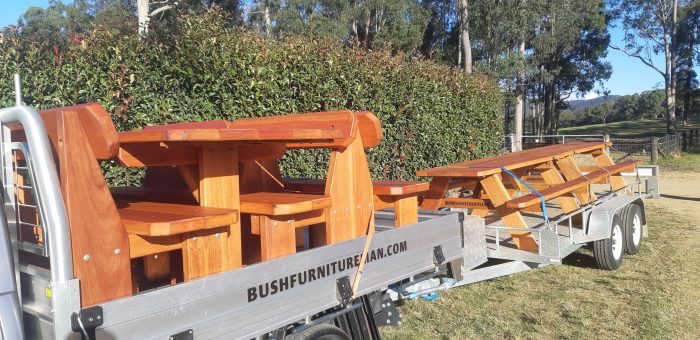
Source: bushfurnitureman.com
Determining the appropriate budget for commercial picnic tables is crucial for any business owner or manager. Understanding the pricing structure for various table types and sizes, along with effective budgeting strategies, is essential to making informed purchasing decisions.
Pricing Ranges for Different Picnic Table Types
Commercial picnic tables exhibit a wide range of pricing based on materials, construction quality, size, and features. Budget-conscious options might be made from treated lumber, while premium tables could feature stainless steel or composite materials. The dimensions and number of seats also significantly influence the cost. Smaller, single-table units are typically more affordable than large, multi-table sets.
- Basic Treated Lumber Tables: These often start from $200-$500 per table, depending on the size and number of seats. They are suitable for locations with less demanding use or as temporary installations.
- Medium-Grade Composite Tables: These tables, often with a more attractive aesthetic, generally fall in the $500-$1500 range per table, reflecting enhanced durability and weather resistance.
- Premium Metal or Composite Tables: Heavy-duty metal or composite tables, designed for high-traffic areas and long-term use, can range from $1500 to upwards of $3000 per table, depending on the specific design and included features.
Creating a Budget for Picnic Table Purchases
A comprehensive budget for picnic table purchases should consider not only the initial cost but also potential future expenses, such as maintenance, repairs, and replacement costs. A detailed breakdown helps in prioritizing needs and allocating resources effectively.
- Initial Cost Assessment: Calculate the total cost of the selected tables based on the number and type of tables needed. Don’t forget to factor in delivery and setup fees.
- Maintenance and Repair Budget: Allocate a portion of the budget for periodic maintenance, such as repainting or replacing damaged parts. This will ensure the longevity of the picnic tables and minimize unexpected costs in the future.
- Replacement Contingency: Factor in a contingency budget for potential replacements. Tables can be damaged over time or may need replacing due to wear and tear or obsolescence. Anticipating this expense avoids financial surprises.
- Ongoing Operational Costs: Consider the ongoing costs of cleaning, sanitizing, and potentially securing the tables. This ensures the tables remain functional and attractive throughout their useful life.
Pricing Model Comparison Table
This table summarizes the different pricing models for various picnic table types, offering a clear comparison.
| Table Type | Material | Approximate Price Range (per table) | Suitable for |
|---|---|---|---|
| Basic Treated Lumber | Treated lumber | $200-$500 | Low-use areas, temporary installations |
| Medium-Grade Composite | Composite materials | $500-$1500 | Moderate-use areas, occasional events |
| Premium Metal/Composite | Metal/Composite | $1500-$3000+ | High-use areas, permanent installations, special events |
Installation and Maintenance
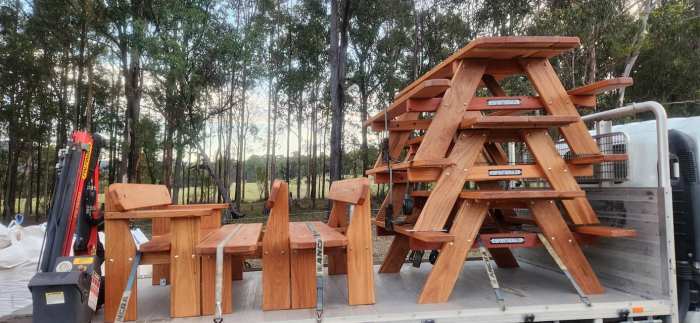
Source: bushfurnitureman.com
Proper installation and maintenance are crucial for the longevity and safety of commercial picnic tables. These steps ensure the tables remain functional, aesthetically pleasing, and resistant to damage from the elements. A well-installed table is also a safer and more comfortable experience for users.
Careful planning and execution of installation, combined with regular maintenance, significantly extends the lifespan of the investment. Addressing potential issues promptly through routine maintenance prevents costly repairs and ensures the tables remain a valuable asset for years to come.
Installation Steps
Careful planning is paramount to successful installation. This includes verifying the site’s level and ensuring adequate support for the tables. Understanding the specific instructions provided by the manufacturer is essential to avoid damaging the tables or compromising their structural integrity.
- Site Preparation: The first step involves thoroughly clearing the area and preparing a level surface. This prevents uneven settling and ensures the tables stand firmly. Consider the surrounding landscape and any potential drainage issues.
- Foundation/Support: The foundation is a critical component for stability. For tables with a base that requires a concrete pad, this should be poured according to local building codes and manufacturer specifications. For tables with a pre-built base, ensure that the ground is leveled and the support is secure.
- Table Assembly: Follow the manufacturer’s assembly instructions meticulously. This will ensure the components are properly connected and the table is assembled according to the intended design. Take care to use appropriate tools and fasteners for the specific materials.
- Leveling and Alignment: Precise leveling is crucial. Use a spirit level to ensure the table is perfectly horizontal. Proper alignment is essential to prevent wobbling or uneven bearing.
- Final Inspection: After assembly, thoroughly inspect the table for any loose connections or damage. Ensure all components are securely fastened and the table is stable.
Importance of Proper Installation
Proper installation is critical for preventing future issues and maintaining the integrity of the picnic tables. A poorly installed table can lead to instability, damage, and costly repairs.
- Structural Integrity: A correctly installed table is more resistant to damage from weather, use, and other environmental factors. This translates to a longer lifespan and reduced maintenance needs.
- Safety: A stable table prevents accidents. Uneven surfaces or unstable structures can lead to injuries. Proper installation directly impacts the safety of the users.
- Appearance: A well-installed table presents a professional and aesthetically pleasing appearance. This contributes to a positive experience for users and enhances the overall look of the area.
Installation Methods
Different installation methods exist depending on the specific table model and site conditions.
- Concrete Pad Installation: For tables requiring a concrete base, this method ensures a stable and long-lasting installation. This is particularly suitable for high-traffic areas or locations with variable weather conditions.
- Ground-Mount Installation: Some tables are designed for direct installation into the ground, using anchoring systems or pre-built bases. This method is more straightforward for simpler installations and requires less extensive site preparation.
- Pier/Post Installation: For tables with adjustable legs, or for locations with uneven terrain, a pier-and-post installation method may be necessary. This method allows for greater flexibility in site preparation and levelling.
Visual Representations
Choosing the right commercial picnic table involves more than just functionality; aesthetics play a crucial role in enhancing the overall experience. Understanding the visual characteristics of various styles can significantly influence the final selection process. Different designs cater to diverse needs and preferences, from rustic charm to sleek modernism.
Visual representation allows for a clear understanding of the different styles of commercial picnic tables. This understanding assists in matching the visual aesthetic with the intended use and environment. The details of materials, colors, and overall design are essential in creating a cohesive and visually appealing space.
Styles of Commercial Picnic Tables
Various styles of commercial picnic tables cater to a range of settings and preferences. The visual characteristics of each style are key to matching the aesthetic with the intended use and environment.
- Traditional Style: These tables often feature classic designs with simple lines and sturdy construction. Materials like treated wood, often stained or painted, are common. The color palette leans towards natural tones like browns, grays, or earthy greens. The overall aesthetic evokes a sense of warmth and durability. This style is suitable for parks, community centers, and casual outdoor settings.
- Contemporary Style: These tables showcase clean lines, modern silhouettes, and sleek finishes. Materials might include metal with powder-coated finishes in various colors. The overall aesthetic is modern, minimalist, and can be adapted to fit various spaces. This style is well-suited for restaurants, corporate events, or spaces aiming for a modern and sophisticated look.
- Rustic Style: Rustic picnic tables typically utilize natural wood finishes, often with visible wood grain and knots. The colors may include natural wood tones or be subtly stained or painted. The aesthetic is relaxed, warm, and evocative of nature. This style is appropriate for outdoor events, farms, or settings that prioritize a connection to the outdoors.
- Folding Style: Folding picnic tables are designed for ease of storage and portability. The materials used vary from wood to metal. Colors can be a blend of the previous styles depending on the intended aesthetic. The aesthetic is utilitarian and practical, suitable for events that need easy setup and takedown, such as schools or community gatherings.
Visual Characteristics Table
This table provides a summary of the various styles of commercial picnic tables, highlighting their visual characteristics and suitable applications.
| Style | Visual Description | Intended Use |
|---|---|---|
| Traditional | Simple lines, sturdy construction, natural wood tones, stained or painted finishes. | Parks, community centers, casual outdoor settings. |
| Contemporary | Clean lines, modern silhouettes, sleek finishes, metal frames with powder-coated colors. | Restaurants, corporate events, modern spaces. |
| Rustic | Natural wood finishes, visible wood grain and knots, warm color tones, subtle stains or paints. | Outdoor events, farms, settings prioritizing a connection to nature. |
| Folding | Ease of storage and portability, various materials (wood or metal), blend of color palettes. | Events requiring easy setup and takedown, schools, community gatherings. |
Safety and Accessibility Considerations
Commercial picnic tables, especially those intended for public use, require careful consideration of safety and accessibility. Ensuring these features are integrated into the design not only enhances user experience but also mitigates potential hazards and promotes inclusivity. This section details the critical safety features and accessibility considerations for commercial picnic tables.
Proper design and materials are essential for preventing accidents and promoting a safe environment for all users. Accessibility features should not compromise safety, but rather enhance usability for people with disabilities. This section will Artikel essential safety features, accessibility standards, and examples of tables that meet these criteria.
Safety Features in Commercial Picnic Tables
Safety features are paramount in commercial picnic tables to prevent accidents and injuries. These features contribute to a more secure and comfortable experience for all users. Important factors include the construction materials, the stability of the table, and the design of the surface.
- Robust Construction: The table’s frame and components should be made of durable, weather-resistant materials like pressure-treated lumber, aluminum, or stainless steel. This ensures the table can withstand various weather conditions and frequent use without compromising structural integrity or safety. Properly sized fasteners and joints are critical for long-term strength and stability.
- Stable Base: The table’s base must be designed to provide adequate stability, preventing tipping or wobbling. Wide bases, reinforced leg connections, and appropriate ground contact are essential for preventing accidents. Consider the intended use and potential environmental conditions when choosing a base design.
- Non-Slip Surface: The table’s surface should be smooth but resistant to slipping, especially for outdoor use. This is crucial for preventing falls and injuries, especially during inclement weather. Consider using textured surfaces or specialized coatings.
- Protective Edges: Sharp edges or protrusions should be avoided. Rounded edges or protective caps on the table’s surface help prevent cuts and scrapes. This is a critical aspect of user safety.
Accessibility Features for Picnic Tables
Designing commercial picnic tables for accessibility is vital to ensure inclusivity and promote equal access for all users. Compliance with accessibility standards is important for legal reasons and ethical considerations.
- Ramp Access: For tables in areas with varying ground levels, ramps can be incorporated to facilitate access for users with mobility impairments. Ramps should meet ADA (Americans with Disabilities Act) guidelines for slope and width.
- Sufficient Seating Height: The height of the table’s surface should be appropriate for users with varying needs. Adjustable heights allow for greater comfort and accessibility. Tables that can be adjusted are ideal for accommodating people of different heights and preferences.
- Clearance Space: Adequate space around the table is critical for users with mobility limitations. Ensure ample space for wheelchair maneuverability and accessibility.
- Appropriate Table Surface: The table’s surface should be flat and free of obstacles. This helps users with limited mobility to easily place items on the table. Smooth surfaces are preferable to prevent tripping hazards.
Regulations and Standards for Picnic Tables
Meeting specific regulations and standards ensures compliance and safety. Regulations vary depending on the location and intended use. These standards ensure the safety and usability of the tables for the general public.
- ADA Compliance: Tables intended for public use should comply with the Americans with Disabilities Act (ADA) guidelines to guarantee accessibility for people with disabilities. The ADA provides specific guidelines for accessibility features, including ramps, clearances, and surface materials. Meeting these standards is crucial for promoting inclusivity.
- Local Building Codes: Local building codes and ordinances often contain specific requirements for outdoor furniture. These codes may specify materials, dimensions, or safety standards that are unique to the local environment. Consult with local authorities to ensure compliance with applicable codes.
- Safety Standards: Safety standards, including those related to material durability and structural integrity, should be adhered to for all tables. This ensures that tables are suitable for the intended use and environment. These standards often address potential hazards, such as tipping or falling objects.
Example of a Compliant Table
A commercial picnic table designed with both safety and accessibility features is shown in the table below. This table model is a good example of a comprehensive approach.
| Feature | Description |
|---|---|
| Construction Material | Pressure-treated lumber for durability and weather resistance. |
| Base | Wide base with reinforced leg connections for enhanced stability. |
| Surface | Smooth, non-slip surface with rounded edges to prevent injuries. |
| Accessibility | Adjustable height to accommodate different users. |
| Compliance | ADA compliant and adheres to local building codes. |
Additional Considerations
Beyond the fundamental aspects of commercial picnic tables, a variety of accessories and features can significantly enhance their usability and aesthetic appeal. Careful consideration of these additions can optimize the space’s functionality and cater to specific needs. This section explores various enhancements and their impact on the overall value proposition.
Additional Features and Accessories
A range of accessories can transform basic picnic tables into versatile outdoor spaces. These additions can increase the comfort, functionality, and visual appeal of the tables. Examples include umbrellas, lighting, benches, and protective covers.
- Umbrellas: Umbrellas offer much-needed shade from the sun, protecting users from harsh weather and enhancing the comfort of the outdoor setting. Their size and style should be carefully considered to match the table’s dimensions and the desired aesthetic. For instance, a larger picnic area might benefit from multiple umbrellas to provide adequate coverage across the space.
- Lighting: Outdoor lighting, whether string lights or more substantial fixtures, can extend the usable hours of the space, making it suitable for evening gatherings. Well-placed lighting can significantly improve the ambiance and safety of the area, making it more welcoming and functional after sunset. LED lights are increasingly popular for their energy efficiency and longevity.
- Benches: Adding benches to picnic tables provides additional seating and allows for more comfortable group dining. Matching benches can create a cohesive aesthetic and improve the overall user experience. Benches can also increase the seating capacity by a considerable amount compared to the basic picnic table.
- Protective Covers: Weatherproof covers can protect the tables from rain, snow, and other environmental elements, extending their lifespan and preserving their aesthetic quality. This is particularly beneficial in regions with unpredictable weather patterns.
Impact on Functionality and Appeal
The addition of accessories significantly elevates the functionality and appeal of commercial picnic tables. Umbrellas and lighting create shaded areas, increasing comfort during hot days or evenings. Benches increase seating capacity, facilitating larger gatherings. Protective covers extend the table’s usability, safeguarding it from environmental damage. All of these elements contribute to a more inviting, comfortable, and practical outdoor space.
Accessory Cost Comparison
The cost of accessories can vary greatly depending on the type, size, and features. A comprehensive comparison is presented below:
| Accessory | Estimated Cost Range (USD) | Notes |
|---|---|---|
| Umbrellas (medium size) | $150 – $500 | Includes installation and anchoring considerations. |
| String Lights (10-meter length) | $50 – $150 | Cost depends on the style and number of lights. |
| Benches (per bench) | $200 – $800 | Prices depend on the material, size, and design. |
| Protective Covers (medium-sized table) | $50 – $200 | Durability and material impact the cost. |
Note: Prices are estimates and may vary based on the supplier, location, and specific features of the accessories. It’s crucial to get quotes from various vendors to ensure accurate budgeting.
Outcome Summary

Source: vanchier.com
In conclusion, finding the right commercial picnic tables near you requires careful consideration of location, type, features, and supplier. This guide provides a detailed overview of the factors to weigh when making your purchase decision, ensuring you select the perfect tables to meet your specific needs and budget. From durability and aesthetic appeal to safety and accessibility, this comprehensive resource will empower you to confidently select commercial picnic tables that are suitable for your intended use.
